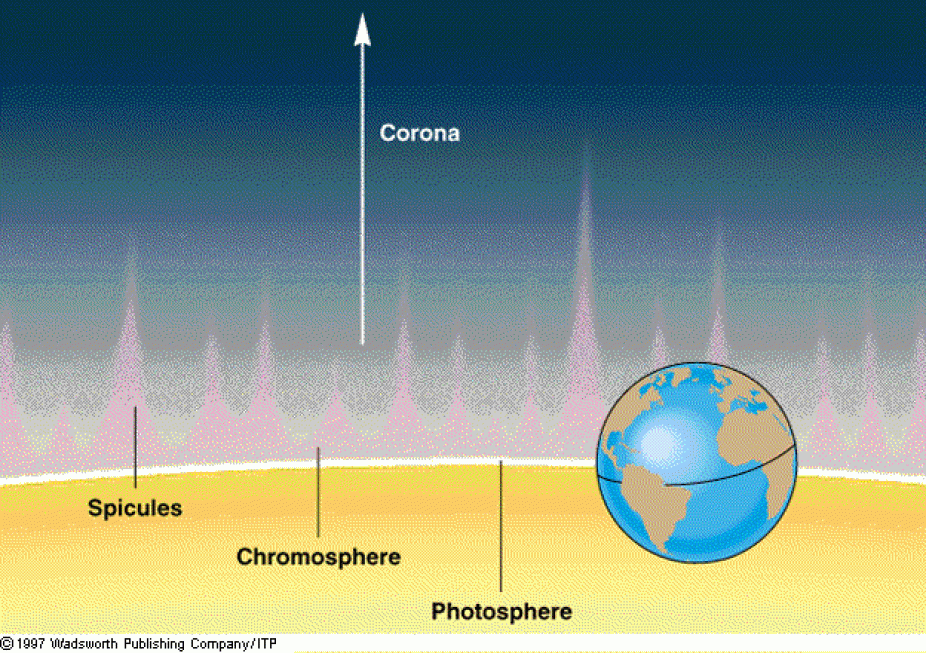Does the Sun have a surface?

The Sun's upper layers compared with the size of Earth.
Wadsworth Publishing Company
The Sun visible to our eyes is a giant ball of plasma, or electrified gas, and does not have a solid surface like the Earth or Moon does. It has a characteristic temperature of 5700 deg. K which is well beyond the melting points of material on Earth. Nevertheless, we see only its very outer layers because the gas is opaque. The effect is like that of a cloud which we know is composed of water molecules but which appears to have a fluffy surface. This outer visible surface is only a few hundred kilometers thick on the Sun and is called the photosphere.
The photosphere is the top of the solar convection zone where the solar energy is carried to the outer surface by convective gas motions over the last quarter of the solar radius.
Above the photosphere is the chromosphere, an inhomogeneous layer extending 10,000 km above the photosphere. It is best thought of as the transition from the photosphere to the corona. The very outer extent of the Sun proper is the tenuous corona which can extend several million kilometers into the interplanetary medium.